Beijing is China's cultural and artistic center. It's said there are over 300 museums and art galleries of all sizes within the city.

We visited over 30 museums and art galleries. Some were state-run, large-scale institutions, such as the Palace Museum, the National Museum of China, the Military Museum of the Chinese People's Revolution, the National Art Museum of China, the Beijing Museum of Natural History, the Beijing Planetarium, the Capital Museum, the China Film Museum, the China Paleozoological Museum, the China National Garden Museum, the Beijing Stone Carving Art Museum, the Beijing Folk Museum, the China Century Art Museum, and the National Library of China. You'll need to make special time to visit these museums.

There are smaller museums integrated into the scenic area, such as the Prince Gong Mansion Museum, the Confucius Temple and the Imperial College Museum, Zhengyangmen, Chairman Mao Memorial Hall, the Xiangshan Shuangqing Villa, the Old Summer Palace Exhibition Hall, the Lama Temple Tibetan Buddhist Art Museum, the Bell and Drum Tower (Beijing Bell and Drum Tower Cultural Relics Conservation Center), the Temple of All Dynasties Emperors, the Beijing Red Mansion Culture and Art Museum, the Juyongguan Great Wall Museum, the Memorial Hall of the Chinese People's War of Resistance Against Japanese Aggression, the Dongsi Hutong Museum, and the Tianqiao Museum. These museums can be visited while touring the scenic area.

There are excellent privately run museums, such as the Guanfu Museum, Poly Art Museum, Red Brick Art Museum, Luo Hong Photography Art Museum, Vivinio Fragrance Art Museum, and Parkview Green Museum of Contemporary Art.

China's museums have a tiered system, with the grades from highest to lowest being level one, level two, and level three. Currently, all museums in Beijing require reservations one day in advance, and visitors without reservations are not allowed to enter the venue.

Friendly reminder: Use WeChat to download the "Beijing Local Treasures" app, which contains introductions to various museums and parks in Beijing, reservation and ticket purchase portals, travel guides, audio guides, etc. It is very convenient.

In order of preference, we'd like to introduce Beijing's 10 most worthwhile museums and art galleries: the Palace Museum, the National Museum of China, the Military Museum of China, the National Art Museum of China, the Beijing Museum of Natural History, the Beijing Planetarium, the Capital Museum, the China Film Museum, the Beijing Stone Carving Art Museum, and the Guanfu Museum. The first six are definitely must-sees.

The Palace Museum is the largest museum in China and is also known as the first of the five great palaces in the world (the Forbidden City in Beijing, the Palace of Versailles in France, Buckingham Palace in the UK, the White House in the United States, and the Kremlin in Russia). It is a World Cultural Heritage.

The Forbidden City, built in 1420 (the 18th year of the Yongle reign of the Ming Dynasty), boasts a history of 600 years. It served as the imperial palace of the Ming and Qing dynasties, formerly known as the Forbidden City, and housed 24 emperors.

View from the Meridian Gate.

Aerial view of the Meridian Gate of the Forbidden City.
The Forbidden City is the quintessence of ancient Chinese palace architecture and one of the largest and best-preserved ancient wooden structures in the world.

Visitors visiting the Forbidden City can first see the imperial palace architecture; second, visit the Forbidden City (Outer Court), where the emperor and his ministers lived; third, visit the Inner Court, where the empress and concubines lived; fourth, view the Forbidden City's collections and exhibitions; and fifth, purchase cultural and creative works exclusive to the Forbidden City.

The Forbidden City mainly features the Halls of Supreme Harmony, Central Harmony, and Preservative Harmony.

On either side of the three main halls, there are the Wenhua and Wuying Halls.

The famous "Military Affairs Council" located next to the Qianqing Gate was pitifully small, just a row of small bungalows. This was the relationship between the emperor and his ministers. The three main palaces of the harem are the Qianqing Palace, Jiaotai Hall, and Kunning Palace. The popular saying "three palaces and six courtyards" refers to these three palaces. The three harem palaces were where the emperor handled daily government affairs and lived with the empress. The Kunning Palace, where the empress resided, was enormous and wielded immense power. The three main palaces, flanked by two wings, housed the empress's and concubines' residences: the East Six Palaces and the West Six Palaces. These palaces were significantly smaller, a world apart from Kunning Palace. For example, the Chengqian Palace, located just off Kunning Palace, was a small courtyard. No wonder the empress and concubines fought fiercely, each eager to move into a larger residence.

With the popularity of palace fighting dramas, some of the six palaces in the East and West Palaces have become internet-famous palaces, such as the "Yanxi Palace", which has become a popular check-in spot.

The Forbidden City has permanent exhibition halls for cultural relics, such as the Treasure Hall, Drama Hall, Stone Drum Hall, Clock Hall, Calligraphy and Painting Hall, Ceramics Hall, Sculpture Hall, Ancient Architecture Hall, Bronzes Hall, Armaments Hall, and Furniture Hall.

The Forbidden City's exhibition halls, including the Meridian Gate, Zhai Palace, Yongshou Palace, Shenwu Gate, and Jingren Palace, occasionally host temporary exhibitions such as "Eternal Palace of Eternal Solidity: The Forbidden City's 600th Anniversary Exhibition," and occasionally collaborate with international museums to organize exhibitions.

Video of the Forbidden City's 600th Anniversary Exhibition.
The Forbidden City is enormous. Legend has it that it contains 9,999 and a half palaces and halls, earning it the nickname "The Sea of Palaces." A visit to the Forbidden City can be short or long, with a quick half-day available for a quick tour and a full day still not enough for a detailed exploration.

The broadcast of palace dramas has made the Forbidden City a popular online check-in spot. With the arrival of check-in maps, many tourists have flocked to the area.

One of the popular check-in spots is the Persimmon Red Wall.

In the Forbidden City, beautiful women dressed in princess costumes or Manchu costumes often appear, weaving among tourists, taking photos and live-streaming.

In recent years, wearing princess costumes and taking photos at the Forbidden City has become a trend.

Even grandmas come to check in.

The Forbidden City is not only a museum, but also a national 5A-level tourist attraction. Therefore, you need to buy a ticket to enter the Forbidden City. The peak season (April to October) is 60 yuan per person, and the off-season (November to March) is 40 yuan per person. People over 60 years old are free. In addition, there is an additional fee to enter the Treasure Hall and the Clock and Watch Hall, 10 yuan per person each.
 Online Image
Online ImageWith the development of the Forbidden City's marketing and the internet, more and more influencers are livestreaming their visits to the Forbidden City. In November 2020, Beijing saw its first snowfall. Outside the Forbidden City gates, a long line of princesses formed, seemingly devoid of any normal tourists.

The National Museum is located on the west side of Tiananmen Square, opposite the Great Hall of the People. Admission is free.

The National Museum of China has been rated as the world's most popular museum, ranking first in visitor numbers, and has become the most popular and beloved museum in the world.

The National Museum is very impressive. Including the underground floor, it has a total of five floors of exhibition halls. It is the largest museum we have ever visited.

Video of the National Museum lobby.
In December 2020, we spent two consecutive days to visit all 21 open exhibition halls in a quick tour.

The National Museum of China is centered around the central hall, which is further divided into two exhibition areas, the South and North.

The South and North exhibition areas each house dozens of exhibition halls.

The exhibitions in the National Museum are divided into basic exhibitions, special exhibitions, temporary exhibitions, international exchange exhibitions, and traveling exhibitions.

There are two basic exhibition halls: "Ancient China" and "Road to Renaissance." Both halls are very large and require a long viewing time (the other halls are not very large). Of these, the Ancient China hall is the largest, occupying most of the B1 floor and is the most worth seeing. The Ancient China exhibition hall follows the succession of dynasties and is divided into eight sections: the Ancient Period, the Xia, Shang, and Western Zhou Dynasties, the Spring and Autumn Period and the Warring States Period, the Qin and Han Dynasties, the Three Kingdoms, the Jin, and the Southern and Northern Dynasties, the Sui, Tang, and Five Dynasties, the Liao, Song, Xia, Jin, and Yuan Dynasties, and the Ming and Qing Dynasties. The Road to Renaissance exhibition hall features exhibitions covering the period from the Opium War in 1840 to the founding of New China and the path of socialism with Chinese characteristics.

Giant sculpture of the Road to Revival.

There are many special exhibition halls, such as "Ancient Chinese Jade Art Exhibition", "Ancient Chinese Coin Exhibition", "Ancient Chinese Buddhist Statues", "Ancient Chinese Porcelain Art Exhibition", "Ancient Chinese Calligraphy and Painting Exhibition", etc. Temporary exhibitions are categorized into several types: themed exhibitions, boutique exhibitions, historical and cultural exhibitions, archaeological discovery exhibitions, regional cultural exhibitions, and classic art exhibitions. Themed exhibitions include the "Classic Art Works from the Museum Collection" and the "Commemorating the 75th Anniversary of Taiwan's Recovery" exhibition.

The exhibition of classic art works in the museum collection includes Chairman Mao’s raising of the first five-star red flag at the founding ceremony, the microphone and salute used, and the big red lanterns hanging on the Tiananmen Gate Tower; the first signboard of the Central People’s Government, and seals of various departments of the State Council; "The Founding Ceremony", "The Five Heroes of Langya Mountain" and other classic Chinese art works.

High-quality exhibitions, such as the "Shandong Boxing Buddhist Sculpture Exhibition" and the "National Museum of Ming and Qing Portraits Exhibition";

Historical and cultural exhibitions, such as the "Ancient Chinese Bronze Mirror Culture", the "Grand Canal Culture Exhibition", the "Ancient Chinese Ceramics Maritime Trade Exhibition", and the "Ancient Chinese Musical Instruments Exhibition";

Exhibitions of archaeological discoveries, such as the "Shanxi Jiuwutou Archaeological Achievements Exhibition" and the "Hongshan Culture Archaeological Achievements Exhibition";

The so-called "First Ancient Dragon in China" unearthed in Hongshan has now become the logo of Huaxia Bank.

Regional cultural exhibitions, such as the "Shandong Folk Art Exhibition" and the "Fujian Traditional Crafts Exhibition";

Classic art exhibitions, such as the "Chinese Sketch Exhibition" and the "Gansu Painted Pottery Art Exhibition".

In the public spaces on each floor of the National Museum, there are exhibitions such as the "Sculpture Collection Exhibition," the "Longquan and Blue and White Porcelain Exhibition," the "Stone Buddhist Sculpture Collection Exhibition," and the "Song Dynasty Stone Carving Art Exhibition."

The National Museum's collections are countless. Even the restaurant aisles are filled with dazzling exhibits. (The restaurant only serves instant noodles and other snacks, so remember to bring your own dry food.) The National Museum of China frequently hosts major national exhibitions, such as the "Great Transformation: A Large Exhibition Celebrating the 40th Anniversary of Reform and Opening Up" in 2018.

The National Museum of China frequently hosts major national exhibitions, such as the "Great Transformation: A Large Exhibition Celebrating the 40th Anniversary of Reform and Opening Up" in 2018.

The Military Museum of the Chinese People's Revolution is located at No. 9 Fuxing Road, Haidian District. Its main building is one of the ten major buildings in the capital, built to commemorate the 10th anniversary of National Day. Admission is free. The Military Museum is a haven for military enthusiasts, showcasing countless aircraft, tanks, missiles, satellites, and artillery. The museum boasts three floors of exhibition space, divided into two main categories: themed exhibitions and basic displays, encompassing 11 halls. In 2020, we visited the museum over two days to see all the exhibits. The theme exhibition in 2020 is: Remember the Great Victory and Defend Peace and Justice - A theme exhibition commemorating the 70th anniversary of the Chinese People's Volunteers' going abroad to fight against the United States and aid Korea. The exhibition on the War to Resist U.S. Aggression and Aid Korea is arranged according to the time of the historical events of that year and is divided into seven parts: the prologue, "Responsibility for Justice and the Decision to Send Troops", "Anti-Enemy Campaigns and Stabilize the Front", "Using Fighting to Promote Talks and Becoming Stronger with the War", "Achieving a Ceasefire and Returning Home in Victory", and "The Great Significance and Historical Contribution of the Victory in the War to Resist U.S. Aggression and Aid Korea".

Exhibition on the War to Resist U.S. Aggression and Aid Korea.

Video of the Exhibition on the War to Resist U.S. Aggression and Aid Korea.
Basic exhibits include: exhibition halls on revolutionary wars led by the Communist Party of China, weapons exhibition, exhibition halls on China's military throughout the dynasties, and exhibition halls on military technology. The exhibition on revolutionary wars led by the Communist Party of China focuses on the great achievements of the period from 1921 to 1949, before the founding of the People's Republic of China.

The weapons exhibition is divided into three areas. The first area is the central hall on the first floor, displaying aircraft, missiles, and ships. Various aircraft are displayed on the ground and in the air.

The most eye-catching feature in the central hall is the massive, Chinese-made H-6 heavy bomber in the center, far larger than an average civilian aircraft.

Video of the aircraft display in the central hall.
The second exhibition area, consisting of three corridors on the second floor, displays pistols, rifles, submachine guns, machine guns, ammunition, knives, and more.

Thousands of weapons and equipment used, captured, and developed by our army are dazzling to behold.

The third exhibition area is located in the central hall on the first basement floor, displaying tanks and armored vehicles, various types of artillery, U2 aircraft wreckage, and Hongqi-2 missiles.


Only when I arrived at the scene did I realize how terrifying tanks and armored vehicles were. It was impossible for a grenade to blow them up. Some of those anti-Japanese dramas are really bragging.

Video of the tank and armored vehicle exhibition.
The exhibition of Chinese military history mainly showcases the thousands of years of military development of the Chinese nation from the pre-Qin period to the founding of the Republic of China.

The military technology display includes exhibition areas for the Army Heavy Weapons Technology and Equipment Department, the Army Light Weapons Technology and Equipment Department, the Army Aviation Weapons Technology and Equipment Department, the Navy Weapons Technology and Equipment Department, the Air Force Weapons Technology and Equipment Department, the Missile Weapons Technology and Equipment Department, and the Nuclear Weapons and Peaceful Uses of Nuclear Technology.

Equipment from the Army Light Weapons Technology and Equipment Department.

The Air Force weapons and equipment technology exhibition area features China's relatively advanced aircraft: the J-10 fighter jet.

The Chinese-made "99A Main Battle Tank" in the Army's heavy weapons and equipment technology exhibition area is eye-catching.

Models of China's first atomic bomb and hydrogen bomb are displayed in the Nuclear Weapons and Peaceful Use of Nuclear Technology exhibition area.

Outdoors at the Military Museum, there are also numerous sculptures depicting military themes.

The National Art Museum of China is located at No. 1 Wusi Street, Dongcheng District. The building is one of the ten major buildings built to commemorate the 10th anniversary of the founding of the People's Republic of China. Admission is free.

The National Art Museum of China is a national museum of plastic arts, focusing on exhibiting works by modern and contemporary Chinese artists. It has six floors and 21 exhibition halls.

The National Art Museum of China basically has no permanent exhibitions. The exhibitions may be different every month. Interested visitors can visit multiple times.

When we visited in September 2020, there were five exhibitions on display, including "Japanese Ukiyo-e Exhibition from the Museum's Collection", "Exquisite Qing Dynasty Woodblock New Year Paintings Exhibition", "Using Beauty to Promote Intelligence - Poverty Alleviation Art Exhibition", "Exhibition of Fine Collections", and "Tibet and Qinghai Thangka Exhibition".

The National Art Museum of China is the top art museum in China and often hosts various national-level exhibitions.

Japanese Ukiyo-e Exhibition.

National Art Museum of China often co-organizes exhibitions with foreign art museums, allowing you to see the world's best art works without leaving the country.

Japanese Ukiyo-e works

The National Art Museum of China has a collection of more than 100,000 works of art of various types, but most of them are still not visible to tourists.

The collection primarily features works from the period before and after the founding of the People's Republic of China, with masterpieces from the late Ming Dynasty, Qing Dynasty, and early Republican period also included.

The collection primarily features fine works of modern and contemporary art, representative works by renowned contemporary Chinese artists, award-winning works from major art exhibitions, and folk art.

Woodblock New Year paintings from the Qing Dynasty.

The collection includes works by artists such as Wu Changshuo, Huang Binhong, Qi Baishi, Xu Beihong, Li Keran, Wu Zuoren, and Wu Guanzhong.

Artworks created by Qi Baishi when he was 93 years old.

Using Art to Promote Wisdom – Art Exhibition on Poverty Alleviation.

The poverty alleviation art exhibition showcases artworks depicting poverty alleviation, productive labor, and other themes from the past 70 years.

Poverty alleviation art works.

Art works on poverty alleviation.

Tibet and Qinghai Thangka Exhibition.

Tibet and Qinghai Thangka.

There is a sculpture park surrounding the National Art Museum of China, which features many different kinds of sculptures.

The Beijing Natural History Museum is located at 126 Tianqiao South Street, Dongcheng District. Admission is free. The Natural History Museum is a natural history museum that primarily displays specimens in the fields of paleontology, zoology, botany, and anthropology. The museum has a relatively fixed exhibition hall structure, consisting of 10 sections: the Hall of the World of Plants, the Hall of Ancient Mammals, the Hall of Ancient Reptiles, the Hall of the Origin of Man, Exploring the Human Body, The Prosperity of Invertebrates, Animals - Friends of Man, the Hall of Aquatic Life, the Dinosaur Park, and Amazing Africa.

The Plant World Hall focuses on understanding the plant world, covering three major themes: the evolution of terrestrial plants, plant functions, and modern plant landscapes.

The Plant World Hall showcases the charm of plants from all angles. The Hall of Paleo-Mammalian Animals displays most of the representative animals of the ancient mammal evolutionary lineage, introducing animals such as proboscideans, odd-toed ungulates, even-toed ungulates, carnivores, and primates. The Paleo-Mammalian Hall displays specimens by era, with important specimens including Jurassicotherium, Crestedtera, Steptodon, Smilodon, Giant Hyena, Hipparion, Yellow River Elephant, Mammoth, Giant Rhinoceros, and Hezheng Sheep, among others. The Hall of Ancient Reptiles showcases the landscape of the biological world over 200 million years ago. Featuring lobe-finned fish, ichthyosaurs, caecilians, and dimetrodon, the Hall illustrates the complex process of vertebrate evolution from water to land.

A group of dinosaur skeletons, including Lufengosaurus xuyi, Mamenchisaurus jingyanensis, Tyrannosaurus rex, Deinonychus, Tuojiangsaurus, Yongchuansaurus, and Ichthyosaurs, are displayed in the center of the hall. The Origin of Humanity Hall focuses on two key questions of public concern: "Who are we? Where do we come from?"

The Origin of Humanity Hall displays fossils and stone tools from the ancient apes and Ardipithecus to modern humans.


Entering the Human Body Hall is a popular science exhibition that systematically displays the scientific content of the human body structure. The Hall of Invertebrate Prosperity tells the story of major historical events such as the formation of fossils, the origin of life, the Cambrian Explosion, and the prosperity of invertebrates.

The Hall of Invertebrate Prosperity includes classes such as protozoa, sponges, coelenterates, brachiopods, molluscs, arthropods, and echinoderms.

Animals: Friends of Mankind showcases the museum's collection of precious animal specimens, creating a vibrant and colorful "animal kingdom."

The animal specimens on display include not only first- and second-class protected species, but also many precious specimens provided by foreign countries.

The Aquatic Life Museum is like a small oceanarium, displaying a variety of fish.

The goldfish in the Aquatic Life Museum are particularly beautiful, including the popular bubble-eye goldfish.

The Dinosaur Park displays dozens of lifelike dinosaurs, pterosaurs, and other animals, reflecting the appearance of the dinosaur world at different times.

What attracts children most is that the dinosaurs restored in the Dinosaur Park are very lifelike. They can shake their heads and tails, show their teeth and claws, roar, blink, and breathe, making the dinosaurs look even more real.

Magical Africa mainly displays the most representative wildlife of the African continent.

Beijing Planetarium, located on Xizhimenwai Street in Beijing, is the largest astronomy museum in China and the first large-scale planetarium in Asia.

The planetarium not only promotes and popularizes astronomy, but is also a national 4A-level tourist attraction, so admission is required. There are two types of tickets: exhibition hall tickets, 10 yuan per person (free for seniors over 60 years old). Theater tickets, 45-30 yuan per person (seniors over 60 years old are not free, but discounts are available).

The planetarium consists of two halls, A and B, with a total of four science theaters. Hall A is the old building, while Hall B is the modern structure, serving as the main exhibition area.

The highlight of the planetarium is the astronomy films. The largest planetarium screens "Wonderful Starry Sky" and "UFOs and Aliens"; the universe theater screens "Blurred Stars" and "Palace in the Sky"; the 4D theater screens "Impact and Life" and "Crossing the Cambrian Period"; and the 3D theater screens astronomy films such as "Destination Moon."

Films are shown at fixed times. Each film is short, ranging from approximately 35 to 17 minutes. Due to the small theater and the large number of visitors, theater tickets may not be available on-site or seats may be poor. We recommend planning ahead and purchasing theater tickets online (if you purchase theater tickets, you do not need to purchase exhibition hall tickets separately).

Gallery B has four floors. The first floor features the "Cosmic Journey" exhibition, featuring exhibits such as: Solar Family, Moon Walk, Meteorite Tribe, Constellation Appearance, Mysteries of the Universe, Colorful Universe, Observing the Sky with the Giant Eye, Companionship of Stars, Cosmic Lighthouse, and the Solar Science Hall.

Solar Family.

Moon and Meteorite Exhibition Areas.


China's lunar rover.

Constellations become apparent.

The "Cosmic Journey" exhibition is located on the B1 floor of Hall B, covering topics such as the evolution of the universe, the scale of the universe, exoplanets, gravitational lensing, escaping from black holes, celestial systems, and time travel.

The "Cosmic Storm" exhibition is located on the second floor of Hall B, showcasing some deep-sky objects, including galaxies, star clusters, and nebulae.

Constellation map.

Hall B houses three science theaters: the Space Theater, the 4D Theater, and the 3D Theater. The 18-meter-diameter Space Theater boasts a standard hemispherical omni-dome screen, capable of presenting a magnificent 3D sky effect to 200 spectators simultaneously – a unique experience in mainland my country.

We only managed to get seats very close to the front of the Cosmos Theater (the further back the better), and watched the movie "Blurred Interstellar." The hemispherical omni-dome screen was so large that you practically had to lie down in a chair to watch.

The Planetarium in Hall A is the largest horizontal planetarium in mainland my country, equipped with the world's highest-resolution omni-dome digital projection system.

The Planetarium Theater in Hall A is the largest theater in the planetarium and its tickets are very popular. The film can realistically reproduce the more than 9,000 stars visible from Earth to the naked eye for the 400 spectators in the theater (we missed the schedule and were unable to watch it).

Hall A houses temporary exhibitions such as "Searching for Another Earth: From Exoplanets to Extraterrestrial Civilizations" and "Antique Telescope Exhibition."

Antique telescope exhibition.

The planetarium also houses the Beijing Ancient Observatory, located outside Jianguomen. This was the imperial observatory during the Ming and Qing dynasties, and separate tickets are required to visit.

The Capital Museum is located at 16 Fuxingmenwai Street, Xicheng District. Admission is free.

The Capital Museum is a comprehensive museum at the provincial and municipal levels in China, focusing on exhibiting Beijing's history, cultural relics and characteristics.

The National Museum of China is a modern building with five floors above ground and two floors underground. It features several exhibition categories, including temporary exhibitions, basic exhibitions, boutique exhibitions, and special exhibitions.

When we visited, there were temporary exhibitions including "Exhibition of Fine Works from the Polish National Museum's Collection" and "Exhibition of the Year of the Pig Zodiac Culture."


The basic exhibitions of the Capital Museum include: "Ancient Capital Beijing·History and Culture·Urban Construction", "Old Stories of the Capital - Old Beijing Folk Customs Exhibition" and other exhibition halls.

The Capital Museum's fine exhibitions include: "Exhibition of Fine Art of Ancient Jade Art", "Exhibition of Fine Art of Yan Dynasty Bronze Art", "Exhibition of Fine Art of Ancient Calligraphy Art", "Exhibition of Fine Art of Ancient Painting Art", "Exhibition of Fine Art of Ancient Porcelain Art", "Exhibition of Fine Art of Ancient Buddhist Art", and "Exhibition of Fine Art of Study Curiosities".

The Capital Museum's special exhibitions include: "Exhibition of Cultural Relics of Ancient Buddhist Pagodas in Beijing" and other exhibition halls.

"Ancient Capital Beijing: History and Culture: Urban Construction" is the core exhibition at the Capital Museum, showcasing the historical development of Beijing from its primitive settlements to the capital of New China.

Urban construction model.

"Old Beijing Folk Customs Exhibition" showcases folk customs from Beijing's 800-plus years as a capital, including weddings, childbirth, birthday celebrations, New Year's Eve celebrations, hutong life, commercial customs, and Peking Opera.

An object used to clear the way with a gong.

Zhushou Hall.

Exhibition of Peking Opera relics from the museum’s collection.

Peking Opera costumes.

Hutong life.

The Capital Museum houses many treasures, such as bronzes, ceramics, Buddhist statues, jades, gold and silver wares, coins, calligraphy, paintings, embroidery, and collectibles.

Buddhist statue exhibition.

Painting exhibition.

Jade exhibition.

Ceramics exhibition.

Located at 9 Nanying Road, Chaoyang District, the China National Film Museum is the world's largest national-level professional film museum and offers free admission.

The main structure of the Film Museum is quite unique, with black as its primary color and metal panels with hollow patterns as its exterior decoration. It is enormous.

The Film Museum has four floors of exhibition halls, divided into two main areas: the exhibition area, which has 21 exhibition halls, and the cinema area, which has six theaters, including a giant screen.

The Central Rotunda in the center of the Film Museum features a huge circular screen, providing a venue for gatherings and celebrations.

The first floor houses the themed exhibition "Light and Shadow: Striving for a New Era," showcasing the glorious journey and achievements of Chinese cinema over the past 70 years since the founding of the People's Republic of China.

The second to fourth floors house the permanent exhibition halls, including the exhibition "A Century of Journey, A Century of Glory," which charts the century-long journey of Chinese cinema from 1905 to 2005. The prologue hall features panels showcasing the "firsts" of Chinese cinema. These panels showcase the first Chinese film shot in 1905, the birth of the first people's film in Yan'an in 1938, and seven other firsts achieved by Chinese cinema since the founding of the People's Republic of China. These panels chronicle the century-long journey and glorious history of Chinese cinema. The Film Art Exhibition Hall consists of 11 exhibition halls, including "The Invention of Film", "The Birth and Early Development of Chinese Film", "Chinese Film during the Revolutionary War Period", "The Creation and Development of New Chinese Film", "Chinese Film in the New Era of Reform and Opening Up", "Fine Arts Films", "Children's Films", "Science and Education Films, Dubbed Films, and News and Documentary Films", "Films from Hong Kong and Macao", and "Films from Taiwan".

Room 1: "The Invention of Cinema." On December 28, 1895, French film inventors the Lumière brothers invented the kinetoscope. In 1895, the Lumière brothers screened the world's first publicly ticketed film in Paris.

Room 3: "Chinese Cinema during the Revolutionary War," a street scene in Shanghai.

Room 4, “The Creation and Development of New Chinese Films,” created a brand-new image of Chinese workers, peasants, and soldiers on the screen for the first time. The Film Technology Expo Area consists of 10 exhibition halls, including "Film Shooting", "Film Art", "Film Special Photography", "Traditional Film Special Effects", "Film Digital Special Effects", "Film Recording", "Film Editing", "Film Printing", "Film Animation" and "Various Films".

The Film Museum has announced many popular check-in spots in the exhibition halls, encouraging visitors to check them out.

For example, the "rural courtyard" in Hall 11's "Movie Shooting" section uses lighting to simulate various weather conditions, including early morning and dusk, lightning, rain, and snow.

For example, in Room 12, "Film Art," there's the "Small Town Commercial Street," the main set built for the film "The Lin Family Shop."

Video of the Lin Family Shop's Small Town Commercial Street.
The Lin Family Shop and Mr. Lin.

In Hall 14, "Traditional Movie Special Effects," a screen rotates backwards outside a stationary train, giving passengers the illusion that the train is moving forward (video).
Of the six theaters in the cinema area, tickets are required for various prices, except for Hall 6, where movies are free. IMAX, also known as the giant screen, is the world's most advanced imaging system. Measuring 27 meters wide and 21 meters high, its realistic acoustics far surpass those of a typical cinema, earning it the nickname "the ultimate movie experience." We watched the American film "Tenet" in the IMAX theater and had a fantastic experience, especially the acoustics, which were unprecedented.

The Film Museum conducts cultural exchanges with foreign institutions from time to time and jointly organizes "International Film Tours" such as the Italian Film Week, the Russian Film Festival, the Spanish Film Festival, etc. These foreign films are basically not released in theaters. The Film Museum also occasionally hosts domestic themed film exhibitions, such as the "Staying True to Our Original Aspiration – Red Films Celebrating the 19th National Congress of the Communist Party of China" exhibition, a screening of Xie Tieli's films, and a film exhibition commemorating the 100th anniversary of the birth of performing artist Zhao Dan.

The Beijing Stone Carving Art Museum is located at Wuta Temple, No. 24, Wuta Temple Village, Haidian District. Adult tickets are 20 yuan per person, and free for Beijing seniors.

The museum was built on the site of an ancient temple called "Zhenjue Temple" from the Ming Dynasty. Only the five-towered Vajra Throne Pagoda remains from Zhenjue Temple, hence the name "Wuta Temple."

The Vajra Throne Pagoda consists of a pagoda base, a canopy pavilion, and five four-cornered, dense-eaves towers. Its interior is made of brick and its exterior is made of stone. It is a stupa in the style of the Bodh Gaya Vihara in India.

The Vajra Throne, its small pagoda base, and its eaves are all decorated with exquisite Buddhist carvings, making it a rare large-scale ancient work of art. The pair of male and female ginkgo trees in front of the Vajra Throne Pagoda are over 600 years old. The female is on the east side, and the male is on the west. Therefore, it's best to visit the Five Pagodas Temple in November when the ginkgo leaves turn yellow, achieving multiple goals at once.

Due to the needs of Beijing's urban development, many old buildings, streets, and tombs were demolished. Many of the stone carvings from past dynasties were collected at Wuta Temple and opened as the "Beijing Stone Carving Art Museum."

With the Jingang Pagoda as its center, the museum is divided into two categories: open-air and indoor displays of stone carvings, showcasing over 500 types of stone carvings from past dynasties.

The stone carvings on display in the museum include Beijing's earliest surviving stone carvings from the Han Dynasty, statues from the Northern Dynasties, epitaphs from the Tang and Ming Dynasties, stone carvings from the Jin and Yuan Dynasties, calligraphy from the Qing Dynasty, and stone carvings by famous calligraphers.

Open-air exhibitions: Six stone carving display areas are located on the east and west sides of the Vajra Pagoda, including stone carvings from mausoleums, temple and monastery inscriptions, ancestral hall and tomb inscriptions, Jesuit inscriptions, and various other types of inscriptions.

The stone carving area within the mausoleum.

The stele carving area of the temple.

The stele carving area of the ancestral hall and tomb.

Jesuit Monument Area.

Comprehensive Monument Area.

The open-air stone carvings are not very large, and while they appear numerous from a distance, you can easily see them all in an hour. However, if you want to savor them in detail, you'll need quite a bit of time.

The museum is flanked by the Western Stele Corridor, the Jinshi Corridor, the Jinshi Academy, and the Eastern Stele Corridor.

Jinshi Academy.

Eastern stele corridor.

Indoor Exhibits: Behind the Vajra Pagoda is a rear building housing an exhibition of Beijing stone carvings and Beijing culture.

The indoor exhibits include the oldest surviving stone Buddha statue in Beijing, epitaphs from the Tang Dynasty onwards, and stone carvings from the Jin and Yuan dynasties of exceptional artistic quality.

Exquisite stone carvings.

Guanfu Museum is the largest private museum in Beijing, located at 18 Jinnan Road, Zhangwanfen, Dashanzi, Chaoyang District. Tickets to Guanfu Museum are 100 yuan per person, with a half-price discount for seniors, 50 yuan per person.

The Guanfu Museum was founded and currently directed by Ma Weidu, a renowned collector and appraiser of cultural relics. The main entrance to the Guanfu Museum is a rather ordinary-looking, small bungalow.

The Guanfu Cats are the brainchild of Ma Weidu, and can be found both inside and outside the museum, making them the "most cultured cats in history."

As soon as you enter the Guanfu Pavilion, you'll find the "Guanfu Cat Pavilion," which houses a collection of various live cats.

Indoors, you'll also find Guanfu Cat cartoons, Guanfu Cat handicrafts, Guanfu Cat painting exhibitions, Guanfu Cat books, Guanfu Cat stamp albums, and more. The Guanfu Pavilion comprises a Porcelain Gallery, a Furniture Gallery, an Oil Painting Gallery, a Craft Gallery, a Video Gallery, a Doors and Windows Gallery, and a multi-purpose hall. The Guanfu Pavilion is decorated in an antique style, emphasizing openness, emphasizing the connection between people and history, and highlighting the affinity of traditional culture.

The porcelain exhibits in the Ceramics Museum are the most representative pieces from the Tang, Song, Liao, Jin, Yuan, Ming and Qing dynasties.

Porcelain from the five famous kilns in Chinese history (Ru Kiln, Jun Kiln, Guan Kiln, Ge Kiln and Ding Kiln), as well as porcelain from Cizhou Kiln and Jingdezhen Kiln, can all be viewed here.

Cizhou kiln porcelain.

The furniture museum features exhibition halls for mahogany, red sandalwood, huanghuali, and wenge, as well as an ancient study.

The Furniture Museum features precious pieces from the Ming and Qing dynasties, making it a leading display of antique furniture in China.

Qing Dynasty rosewood furniture.

Huanghuali furniture.

The Crafts Gallery displays ancient handicrafts, including cloisonné, stationery, bronzeware, lacquerware, and copper-based painted enamelware. The Door and Window Museum exhibits ancient doors, windows, partitions, fences and other architectural components from residential buildings in the Yangtze and Yellow River basins during the Ming and Qing dynasties in China.

The Door and Window Museum's collection of ancient Chinese doors and windows is one of the few unique exhibits in China.

This type of door and window is rarely seen on the market anymore. The large screen door is very impressive.

The oil painting gallery displays works by renowned contemporary Chinese painters including Chen Yifei, Yang Feiyun, Chen Yanning, Liu Wenjin, and Luo Zhongli, as well as modern sculptures.

The Oil Painting Gallery regularly exhibits important works by contemporary Chinese oil painters and sculptors, and the exhibition themes are adjusted from time to time.

Having introduced 10 of the most worth-visiting museums and art galleries in Beijing, let's briefly introduce some of the more distinctive ones.

The Garden Museum is China's first national-level museum dedicated to gardens. Admission is free.

The Garden Museum focuses on collecting historical garden relics and showcasing the charm of garden art. The Garden Museum comprises three main sections: indoor exhibitions, outdoor exhibition gardens, and indoor courtyards. These three elements interweave and interpenetrate each other, forming a cohesive whole. The Garden Museum showcases a variety of garden types, including imperial gardens, private gardens, Jiangnan gardens, northern gardens, and Lingnan gardens.

Outside the museum, there's a larger "Beijing Garden Expo Park" that you can visit as well.

The Garden Expo Park was the venue for the 9th China International Garden Expo in 2013. It features numerous garden structures from both China and abroad, making it even more worthwhile as a tourist attraction than the Garden Museum.

The Beijing Folk Museum is located within the Dongyue Temple. It is the only state-run folk museum in Beijing and is free to visit.

The Dongyue Temple was originally the largest monastery of the Zhengyi Daoist sect in North China. It primarily worshipped Dongyue Emperor, the deity of Mount Tai.

There are a ton of temples to see inside the Dongyue Temple, both old and newly built, all stacked up side by side.

The back building of the Dongyue Temple houses the exhibition hall of the Beijing Folk Museum, which hosts year-round exhibitions on folk customs.

The Poly Art Museum is a privately-owned museum with an admission fee of 20 yuan per person. It's a small museum and should take one to two hours to visit.

The Poly Art Museum showcases a simple and exquisite style, focusing on bronze artifacts. It has only two exhibition halls: "Exhibition of Fine Chinese Ancient Bronze Art" and "Exhibition of Fine Chinese Ancient Stone Buddhist Sculpture Art."

Exquisite stone-carved Buddhist statues.

The Poly Art Museum houses many rare art treasures, such as the bronze animal heads of the Old Summer Palace, including the ox, monkey, tiger, and pig heads.

China Paleozoological Museum is China's first national-level thematic museum dedicated to paleontological fossils and the largest paleontological museum in Asia. Admission is free. The Paleozoological Museum systematically introduces the origin and phylogeny of vertebrates.

The Paleozoological Museum is divided into two halls (the Paleovertebrate Hall and the Shuhua Paleoanthropology Hall) and four exhibition halls (the Hall of Ancient Fish and Amphibians, the Hall of Ancient Reptiles and Ancient Birds, the Hall of Ancient Mammals, and the Hall of Ancient Humans and Paleolithic Ages) according to the evolutionary sequence of organisms.

The Museum of Paleontology has nearly a thousand collections on display, with a complete range of exhibits, ranking first in Asia and the best in China.

The China Century Art Museum is located within the China Millennium Monument. It is an art museum that mainly displays world art.

There is no charge to visit the basic exhibitions of Century Art Museum, but some famous special exhibitions require additional tickets.

The China Century Art Museum often cooperates with foreign institutions and occasionally organizes high-level art exhibitions such as Italian Renaissance Art, National Geographic Classic Image Feast, and Winter Olympics Ice and Snow Art.

Welcoming the Winter Olympics Ice and Snow Art Exhibition.

The National Museum of Classic Books, located in the National Library, is a book culture exhibition and is free to visit.

The Classics Museum uses "paper and characters" as its basic elements, displaying ancient books in ethnic languages, manuscripts of famous people, and rare Western books from the oracle bone inscriptions more than 3,000 years ago to the present.

Nationally precious ancient books.


Red Brick Art Museum is a private art museum, its biggest feature is the "red brick". There is a fee to visit, 130 yuan/person.

The Red Brick Art Museum uses red bricks as the basic elements, supplemented by some blue bricks, to create a contemporary landscape courtyard art museum.
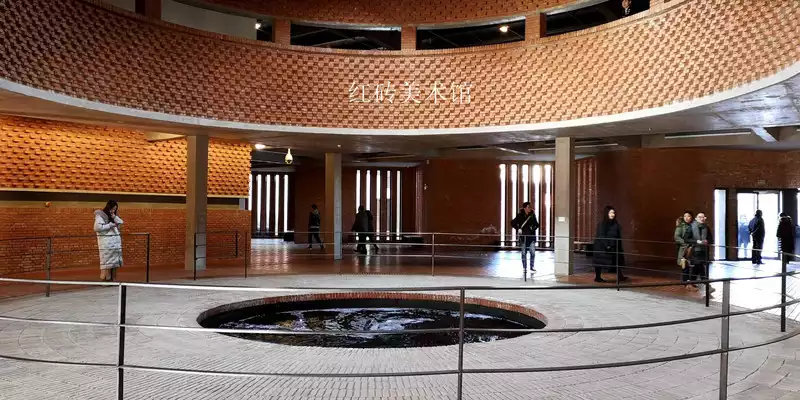
The works in the art museum are all made of bricks, which is unique in the country.
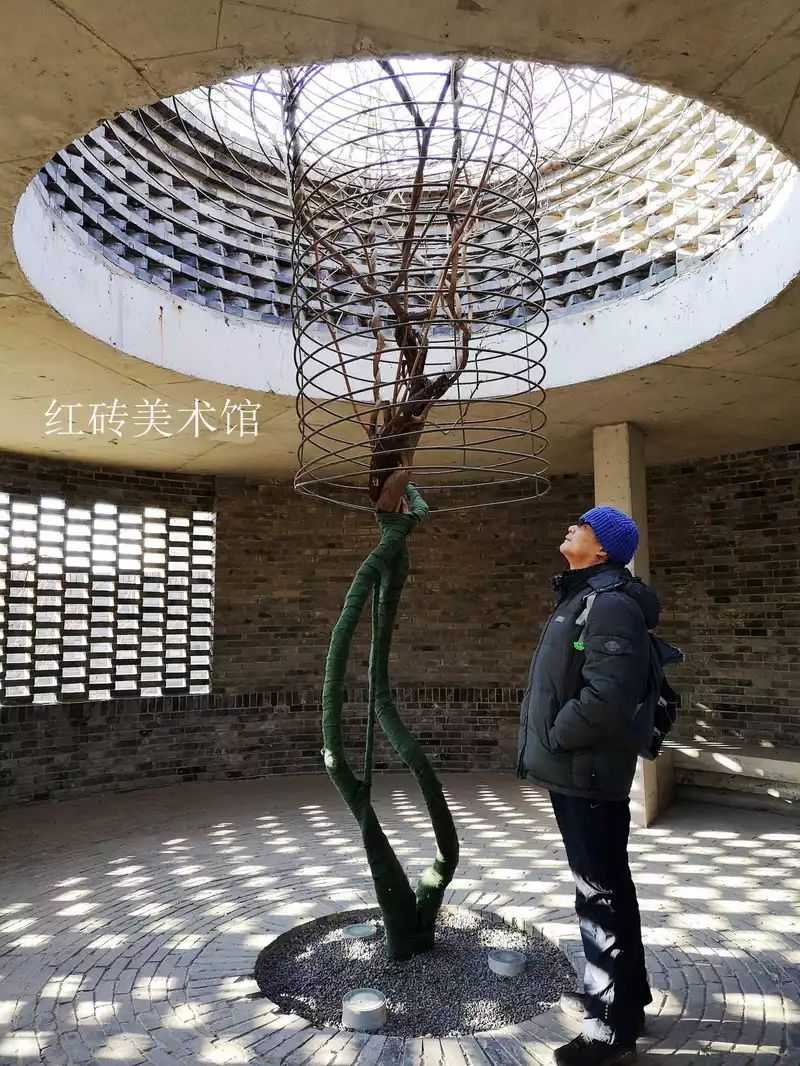
The artworks displayed in the art gallery are very unique and provide a new aesthetic experience.
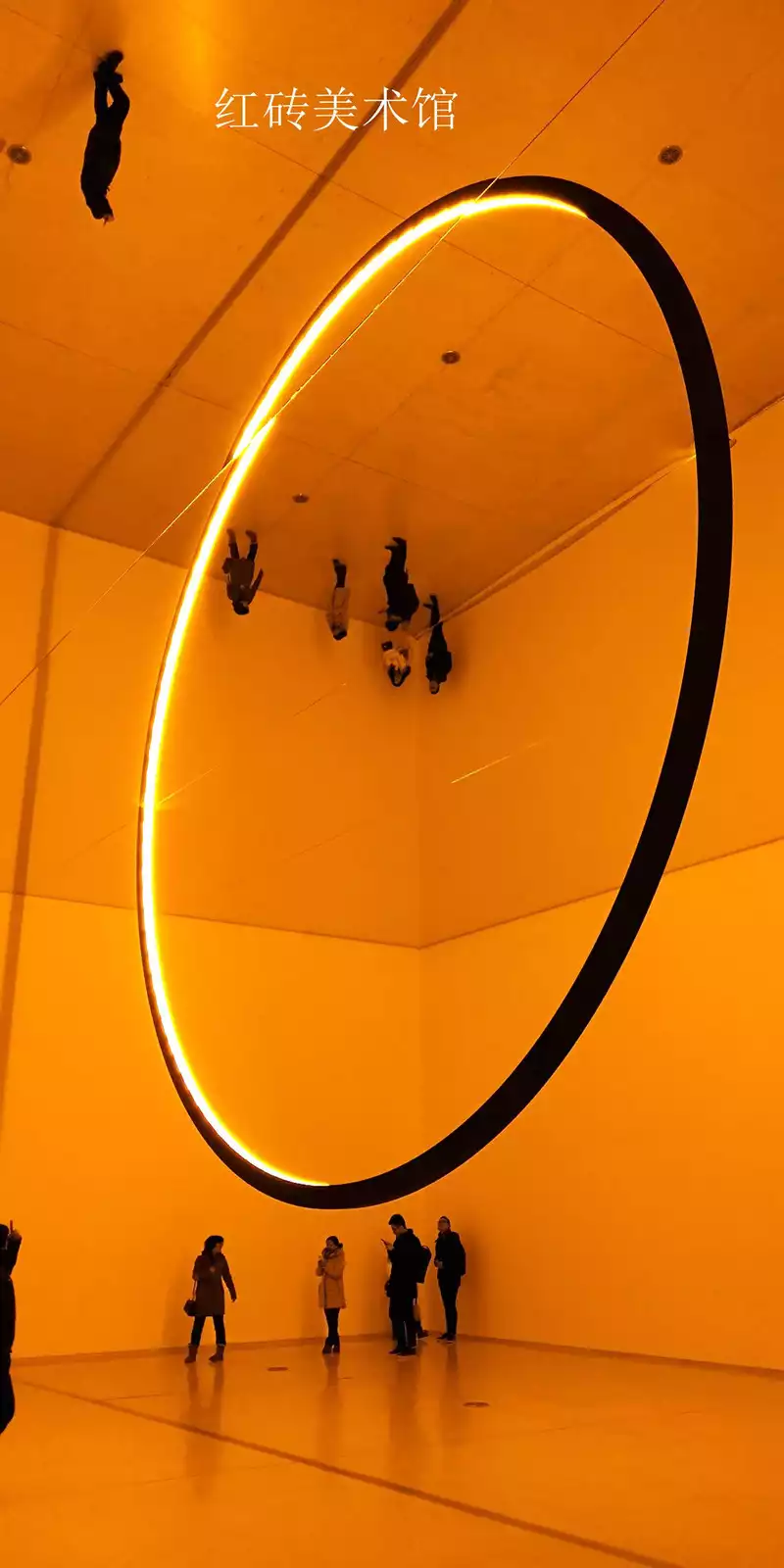
Luo Hong Photography Art Museum is a private art museum. There is a fee to visit, 100 yuan per person, half price for seniors.
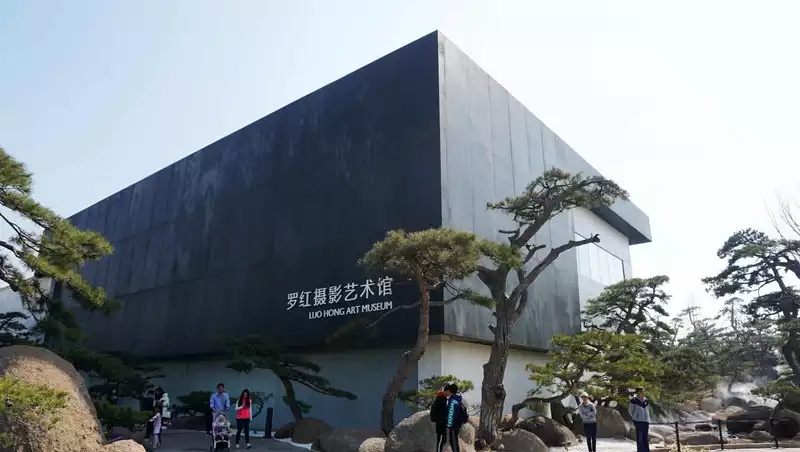
The owner of the art museum is Luo Hong, the president of the domestic cake giant "Hollyland". Because he was rich and good at photography, he built a tall photography art museum.
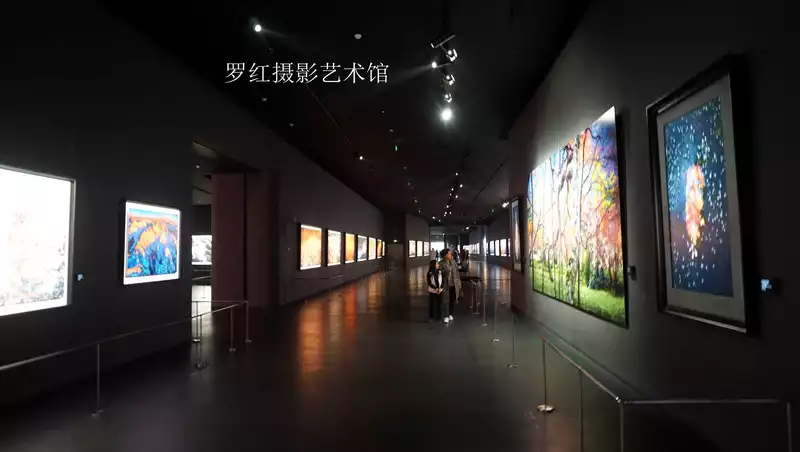
The nearly one thousand works in the Photographic Art Museum are all created by Luo Hong, and her exhibition production level has reached the top level in China.
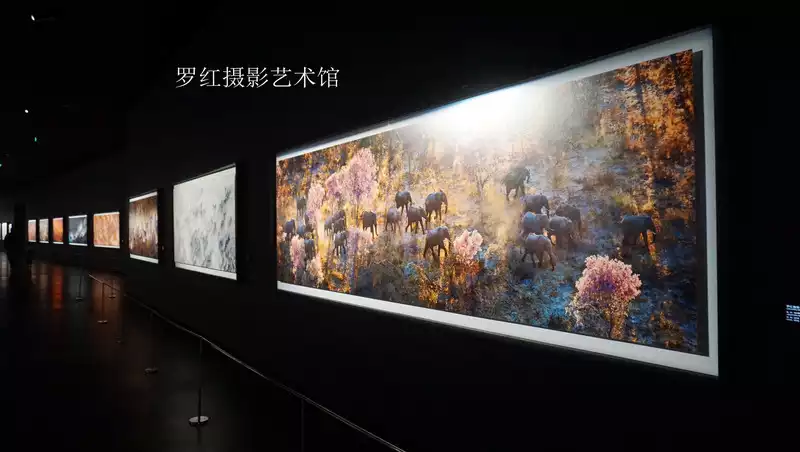
Luo Hong's photographic works on display mostly come from uninhabited areas such as Antarctica, the Arctic, Africa, Xinjiang, and Tibet. They are equipped with top-notch photography equipment, off-road vehicles, and helicopters to follow and shoot. They express their emotions freely. If you have money, you will be willful.
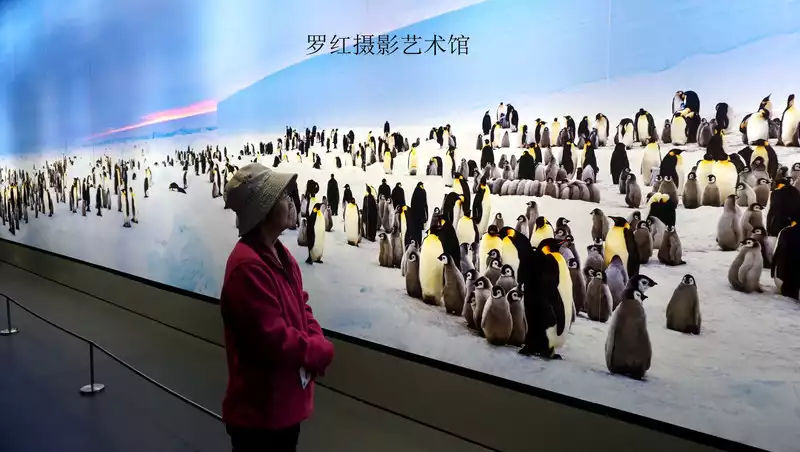
Vivigno Fragrance Art Museum is located in Qianmen Beijing Square. It is a private art museum and is free to visit.
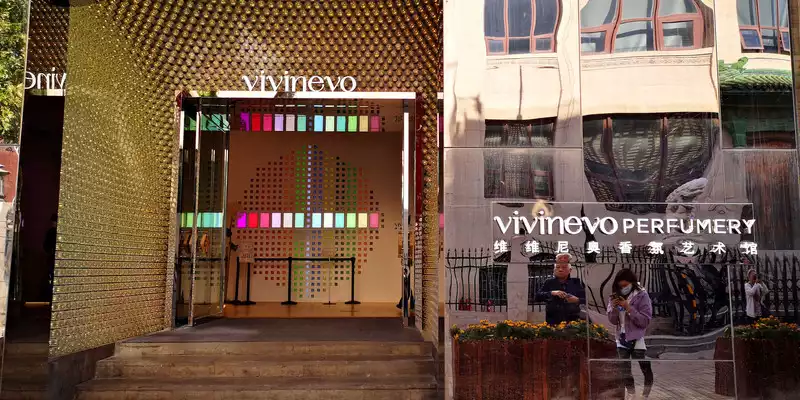
Unlike other art museums where you use your eyes to see, this art museum uses your nose to smell.
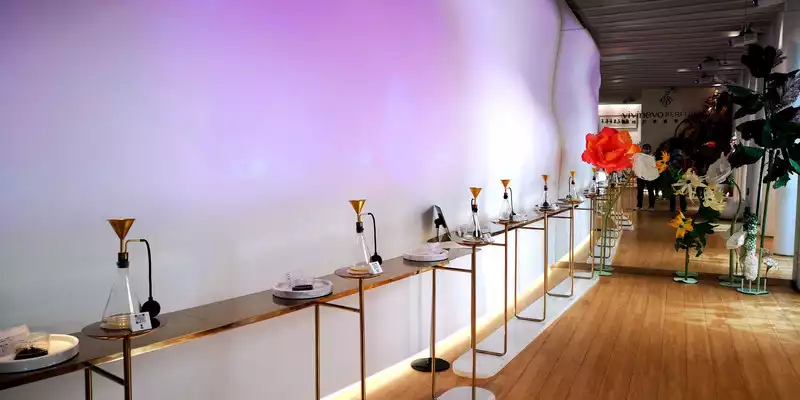
The art museum is full of various fragrances, and perfume has become a kind of fragrance culture.
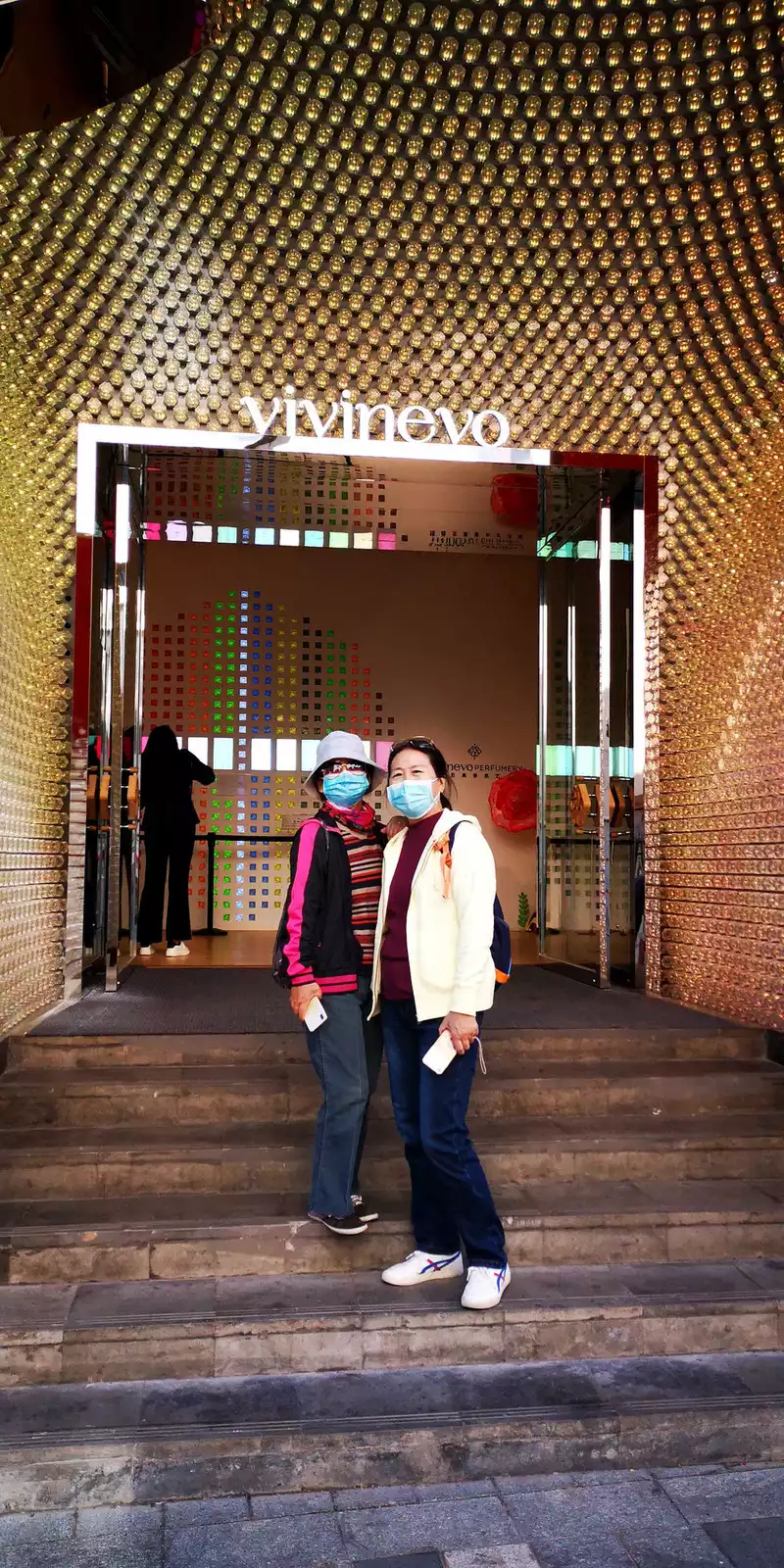
The Parkview Contemporary Art Museum is located in the Parkview Green Building. It is an innovative building in Beijing that combines contemporary art exhibitions with fashion shopping and boutique hotels. It is free to visit.
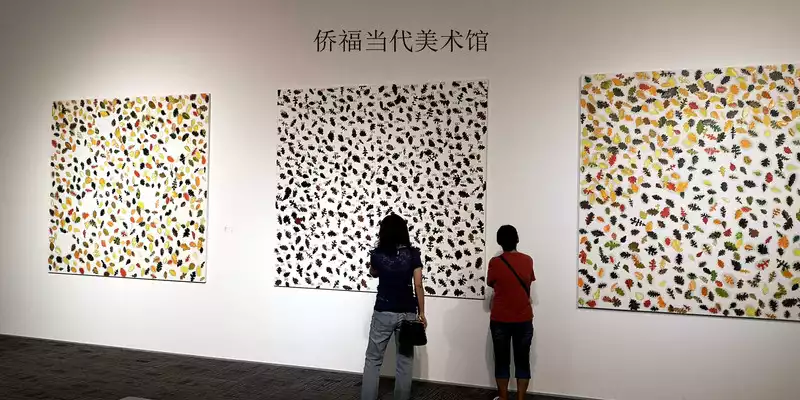
The art museum is a diversified art exchange venue. The building integrates art, shopping and food, and it can be regarded as a fashionable life in Beijing.
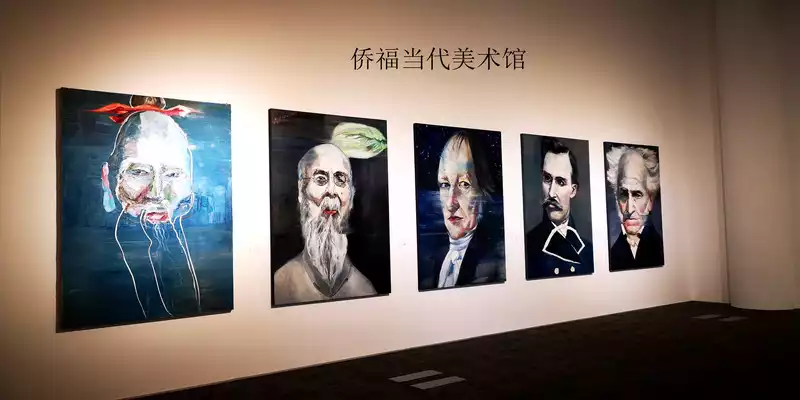
Contemporary art works.

At this point, we have introduced some of the Beijing museums and art galleries we have visited.
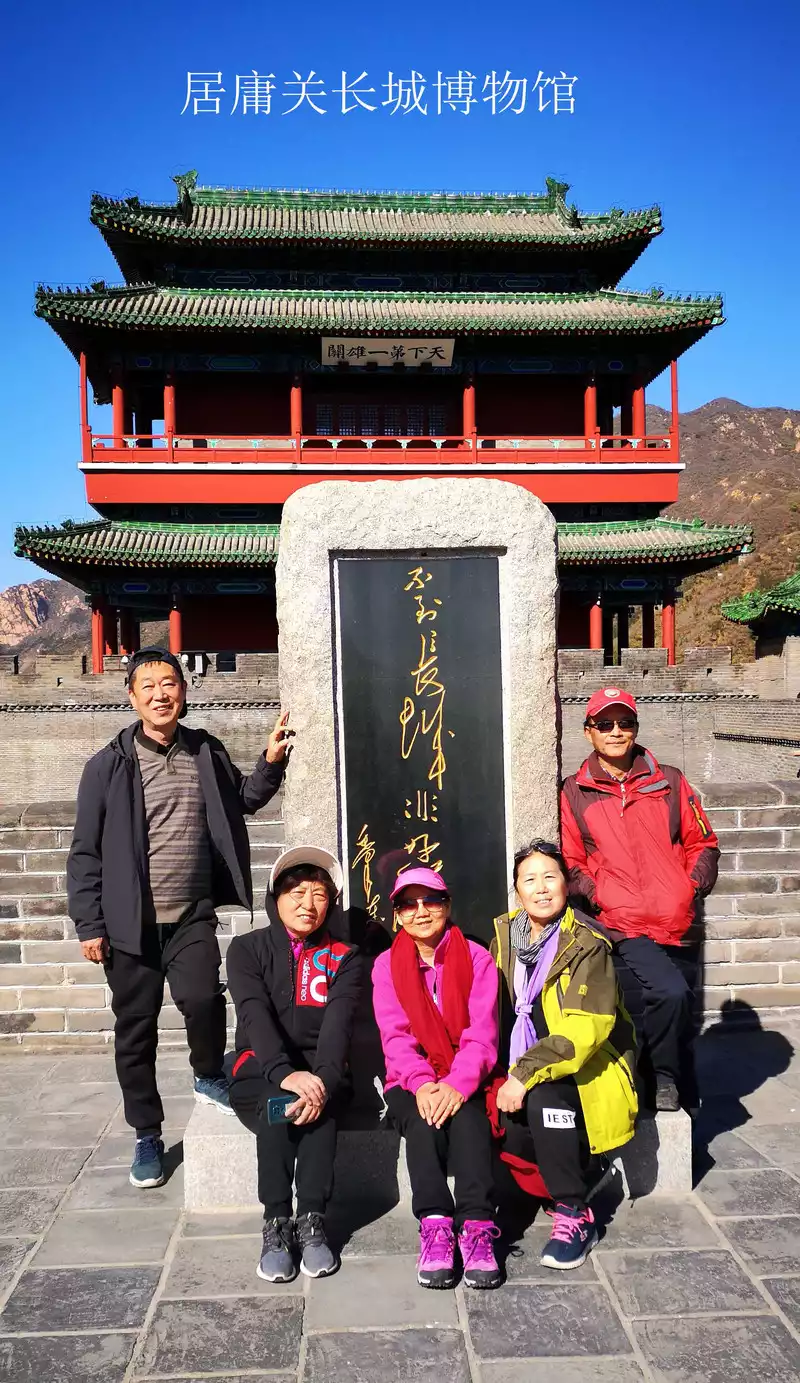
Beijing also has many professional museums, such as China Railway Museum, China Geology Museum, China Agriculture Museum, China Chemical Industry Museum, China Aviation Museum, Civil Aviation Museum, China Science and Technology Museum, Beijing Lu Xun Museum, China Printing Museum, China Numismatic Museum, China Telecommunications Museum, China Postal Stamp Museum, Beijing Opera Museum, Tank Museum, Beijing Police Museum, China Court Museum, China Fire Museum, etc. We have not been there yet, and we will only wait for the opportunity to visit again in the future. Thanks for reading!
Number of days:6 days, Average cost: 3850 yuan, Updated: 2021.09.28
Number of days: 2 days, Average cost: 1,000 yuan, Updated: 2022.07.30
Number of days: 2 days, Average cost: 500 yuan,
Number of days: 1 day, Average cost: 500 yuan,
Number of days: 1 day, Average cost: 300 yuan,
Number of days: 1 day, , Updated: 2022.07.31